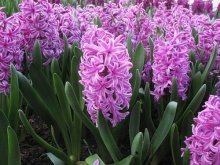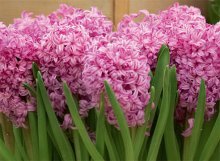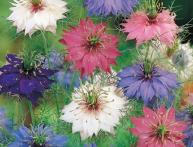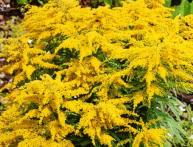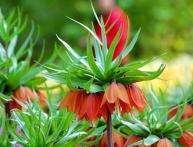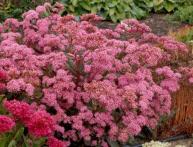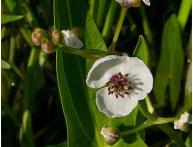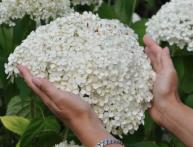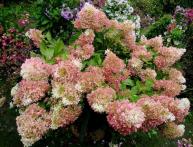Proper handling of hyacinths: secrets of growing and care
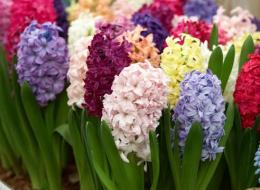
With the arrival of spring, colorful flowers bloom in the garden beds. These are hyacinths that have earned love for their rich aroma and variety of shades.
Content:
- Hyacinths: a personal matter
- The plant has faded: what are the next steps?
- Propagation of hyacinths
- What do hyacinths love and what are they afraid of?
Hyacinths: a personal matter
A perennial herbaceous plant - a member of the lily family. The genus Hyacinth consists of 30 species of flowers. Most of them can be found in the Mediterranean and South Asia.
Oriental Hyacinth is very popular. This colorful plant grows in Greece, Turkey, Syria and Lebanon. In the south of Russia, blue flowers catch your eye.
When the winter cold finally recedes, the flower beds are covered with white, pink, purple, and burgundy carpets. These are the hyacinths that bloom, which can even be black. The plant is universal, it grows both in a flower pot and in open ground.
Flower actively develops in spring. In hot summers and frosty winters it “sleeps”. The bulb is quite large (height - 4-6 cm, same diameter), round. It is covered with thin scales on top.
Over the course of 10 years, lush flowers grow from a healthy underground shoot. After this period, the plant weakens. When the hyacinth turns 5-6 years old, babies form on its bulb. This allows the plant to propagate.
The elongated, narrow foliage of flowering hyacinth is relatively short.Later it grows up to 20 cm. The stem is thick and fleshy. The inflorescence in the form of a brush (height up to 30 cm) consists of 12-35 fragrant bell-shaped flowers.
Hyacinths love warmth because they are native to the South. In countries with mild climates, this crop colors the world in spring and late winter. Then the foliage fades, and the bulb gains strength in sun-warmed soil, which does not freeze even in winter. At this time, the foundations of a new shoot and daughter bulbs are laid.
The plant was grown by the ancient Romans. The 16th century was marked by the appearance of hyacinths in Europe. They immediately won the hearts of the aristocracy with their sophistication. Today, wholesale supplies of bulbs to European countries are carried out by the Netherlands, Foggy Albion, and Holland.
The plant has faded: what are the next steps?
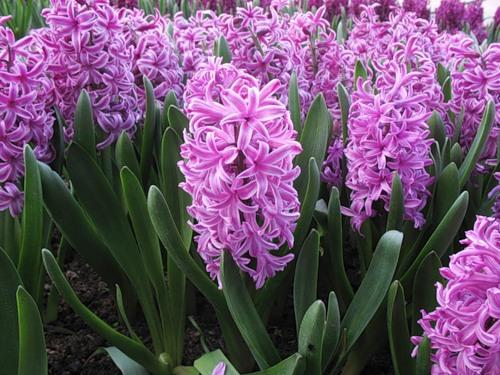
When the lush inflorescence has faded, you need to wait until the green part of the hyacinth turns yellow and dies. This means that all the nutrients are concentrated in the bulb.
The underground shoot is dug up, the baby is separated and dried. Until autumn it is stored in dry peat, observing the temperature regime. The first 2 months maintain 23-250C, then – 17-180C.
In areas with cold, rainy summers, bulbs are dug in June or early July. Store until planting in a warm room with good air circulation and sufficient humidity.
To get the underground shoot out of the ground, wait for a warm sunny day. The onion is “prepared for bed”:
- Having dug up, they clear the earth.
- Wash in a low concentration solution of potassium permanganate.
- Large daughter formations are separated, leaving small ones intact.
- For 7 days, the extracted material is dried at 200C in a shaded room.
- Remove all remaining roots and leaves.
- Sort by size.
- Place in containers for storage in one or two layers.
- Ventilation cannot be neglected. This is necessary for several reasons. Hyacinths, as typical representatives of bulbous, emit a specific gas. If harmful compounds accumulate, the shoot will suffocate. Air circulation is a preventive measure against bacterial plant diseases.
- In areas with hot, dry summers, the bulbs can be left in the ground. Once every few years they are dug up to divide and replant.
- When storing planting material, you should periodically check its condition. At the slightest sign of rot, the shoots are thrown away.
It is not enough to simply remove the bulb from the ground; it is important to properly preserve it until the next season.
Propagation of hyacinths
There are cases when a large, dense shoot has no daughter formations at all. And this situation can be repeated from year to year. Experienced gardeners know the secret of how to propagate a plant.
Paradoxical as it may seem, the onion needs to be damaged: cut out the bottom or make cross-shaped cuts. New bulbs will grow in damaged areas. If you choose the first method, you will get about two dozen children. In the second case - from 7 to 9.
The planting material obtained in this way is very small. It needs to be grown over several years. The better the care, the faster the shoots will ripen.
Flowers are propagated by planting young bulbs or separating mature ones. To do this, choose medium-sized shoots.
The mother bulb is divided into 4 parts, each planted in the soil. You can expect that 3-4 young shoots will form on a mature shoot. In the summer, the children are carefully separated and placed “to rest.”They are sent back to the flowerbed earlier than adult bulbs. After 2-3 years of waiting, the young plant will delight you with flowering.
Theoretically it is possible propagate hyacinths seeds. In practice, only professional breeders do this. For amateurs, this method is not effective, since you will have to wait about 5 years for flowering. In this case, the young plant will differ from the more mature one.
The most rational ways for hobbyists to propagate hyacinths is to plant young shoots and divide mature ones.
When and how are bulbs planted in the ground?
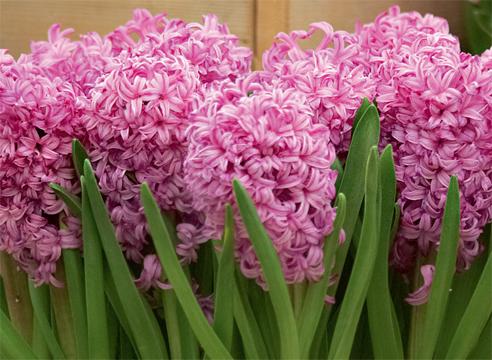
Hyacinths returned to the soil at the end of September - beginning of October. You shouldn't do this before. Flowers will begin to actively develop in warm weather, but will die in cold winter. Late-planted shoots will not have time to take root thoroughly before frost. This is also one of the reasons for the death of flowers.
If you take care of protecting the bulbs in advance, you can plant them as early as November. To do this, the flowerbed is insulated with leaves and covered with film from precipitation. The shoots are hidden in the ground to a depth of 15-20 cm at a distance of at least 15 cm from each other. The inflorescences will be lush and large if the soil in the holes is fertilized.
Hyacinths are very susceptible to various pathogens and pests that accumulate in the ground. To keep the plant healthy, it is worth planting the bulbs in a new place every year. Only after 3 years can you return to your previous flowerbed. If other bulbous plants grew in the area before the hyacinths, then it is not suitable for them.
Site preparation must be approached responsibly. The purpose of such actions 2 months before planting is to prevent the roots from breaking off when the soil shrinks.Since the rhizome penetrates deep enough into the soil (up to 50 cm), surface treatment will not be effective.
When there is a lot of clay in the soil, sand and peat are added. Organic and mineral substances are added as needed. Humus or rotted manure is used to fertilize the soil at the rate of 10-15 kg per 1 m2. The shoots may fester if fresh organic matter is added. Wood ash and superphosphate are useful elements for hyacinths.
Choosing the right time and place to plant hyacinth bulbs is what you need to create lush, healthy plants.
What do hyacinths love and what are they afraid of?
Flowers like sun or partial shade and no drafts. They grow well in light, loose soil with a high concentration of humus. If the area is flat, but slightly inclined, then melt and rain water will drain. Excess moisture will lead to disease and death of shoots.
Basic care:
- Timely watering in hot weather
- Top dressing
- Loosening the soil in case of crust formation
- Weeding
- Tying up elongated plants with large inflorescences that may break
If care for a plant wrong, it will “tell” about its problems with yellow leaves. The reason for unopened buds may be moisture that gets on them during watering. The leaves will be excessively long and weak when the blooming hyacinth does not have enough sunlight. One of the reasons for the slowdown in growth is that the bulbs have not “rested” enough.
Hyacinths will delight caring owners with their bright colors, who will take into account all the preferences of the plant. Gardeners have been decorating their flower beds with luxurious flowers for a long time. Taking good care of the bulbs will allow hyacinths to be propagated and grown for many years.
Interesting video about hyacinths:
Interesting information about the vegetable garden

